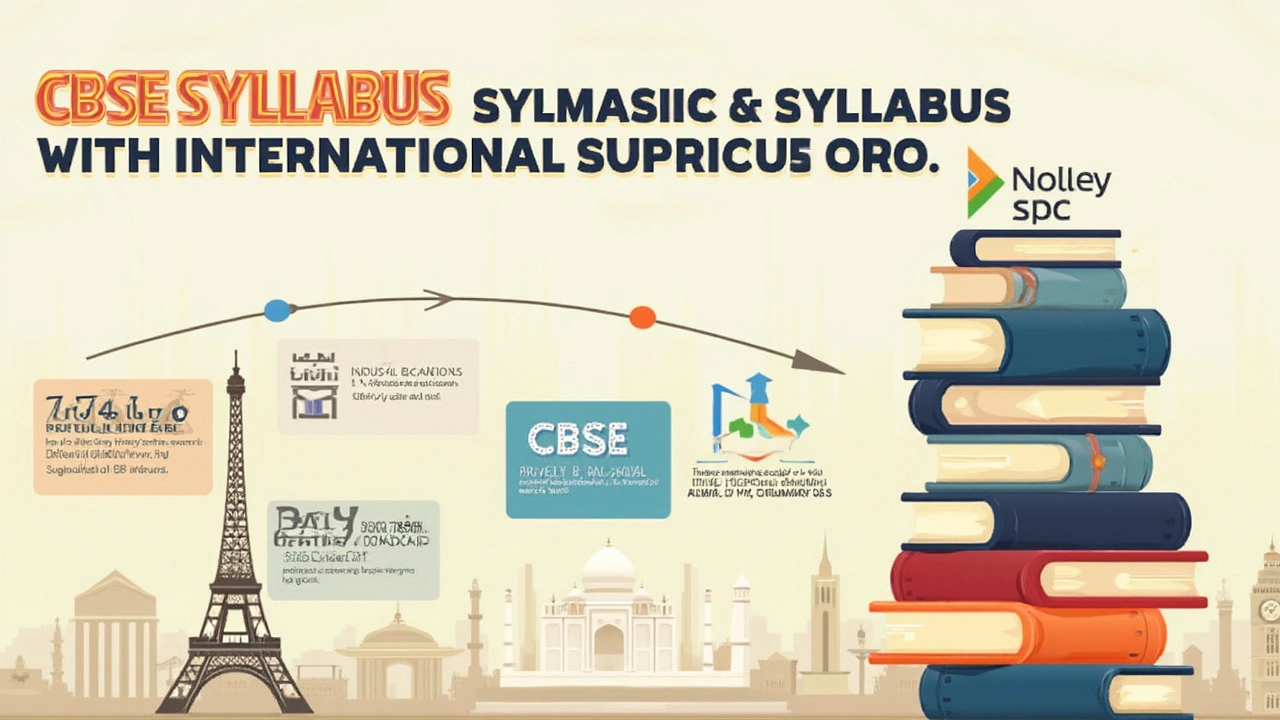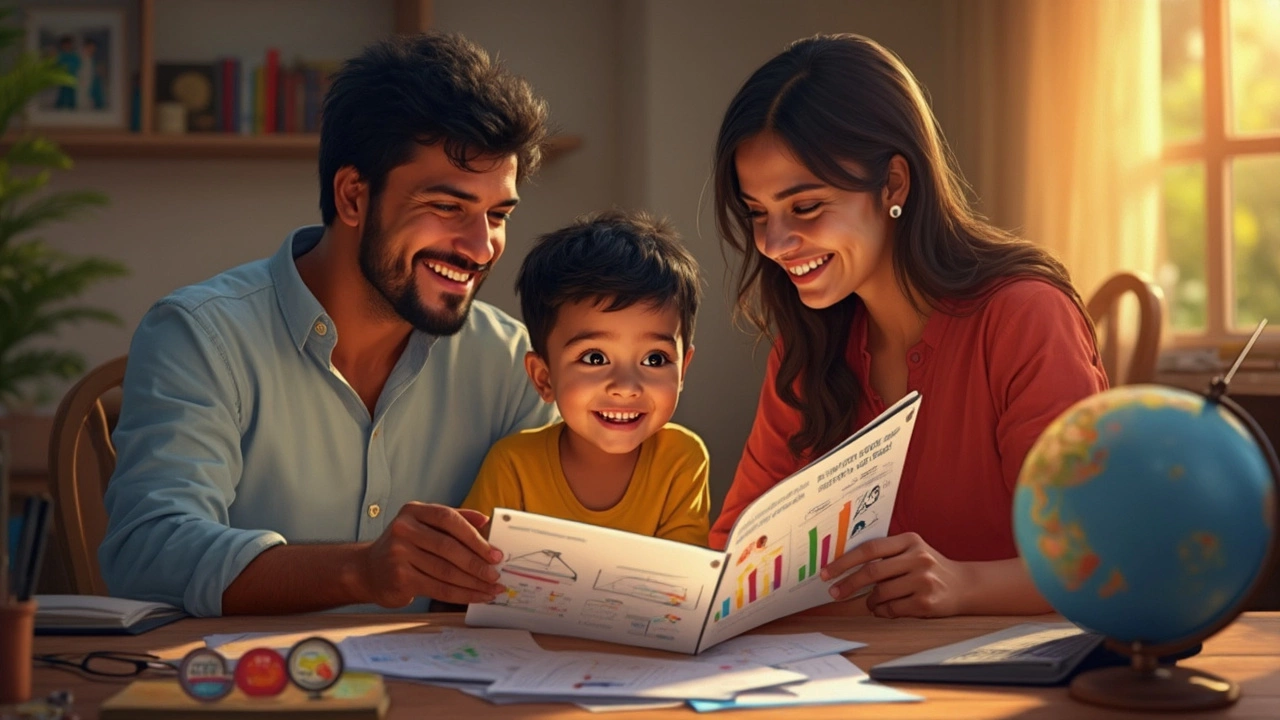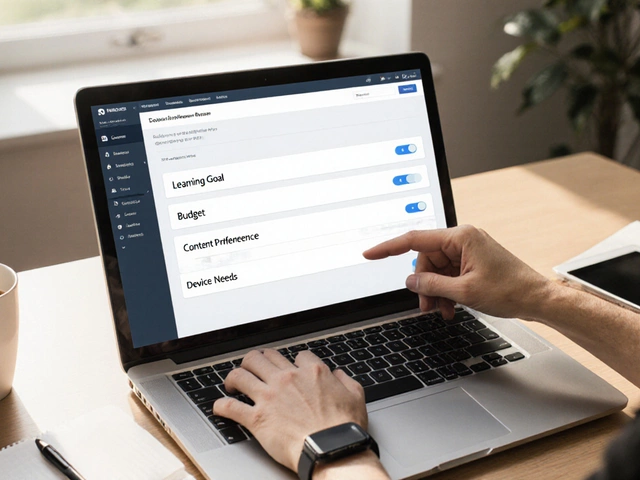
There’s a never-ending debate among parents and students: which school syllabus is actually the best out there? It’s not just about marks or grades. It’s about what students really remember, the skills they walk away with, and how well they’re set up for college and jobs. With tons of options—CBSE, IB, IGCSE, and state boards—it’s easy to get lost in the mix.
What’s interesting is that the CBSE syllabus has managed to stay relevant, not just in India, but in plenty of schools abroad too. Ever wondered why so many competitive exams in India (like JEE and NEET) are based on CBSE content? Parents love it because it feels stable, keeps up with the times, and covers all the core topics kids need for science, math, and language studies.
If your main goal is a solid foundation that works for both Indian and international exams, CBSE is one of the go-to choices. But, is it really the best in the world? Or does that title depend on what you’re looking for? Let’s get into the details and see what sets CBSE apart from the rest—and where its limits show up.
- What Makes a Syllabus the 'Best'?
- A Quick Snapshot of the CBSE Syllabus
- CBSE vs. Other Popular Curriculums
- Real-World Benefits of Choosing CBSE
- Tips to Make the Most of the CBSE Syllabus
What Makes a Syllabus the 'Best'?
Not all curriculums are built the same, and there’s no one-size-fits-all solution. But if you’re wondering what actually goes into making a syllabus the ‘best,’ there are a few things that really count. First, a great syllabus covers the basics—math, science, language, and social studies—while also encouraging kids to think for themselves. Another big deal? Keeping things updated. The world changes fast, so the best curriculums make sure students aren’t stuck learning stuff that’s already outdated.
Parents and teachers often look at these factors:
- Relevance: Does the syllabus prepare students for what comes after, like college or jobs? A solid CBSE syllabus has to stay relevant to today’s needs.
- Flexibility: Students aren’t all the same. A good syllabus lets them pick subjects that match their interests and future dreams.
- Assessment Style: Rote memorization is out. The focus now is on understanding, problem-solving, and critical thinking. It matters how the syllabus chooses to test and grade students.
- Recognition: If a curriculum isn’t widely accepted by top universities or employers, students could miss out. The CBSE syllabus is well-known for opening doors, especially across India and in certain international schools.
- Support Material: Good textbooks, online resources, and teacher training all make a difference. Some syllabuses come with plenty of tools for both students and teachers to help with learning.
Here’s a quick snapshot comparing a few well-known curriculums:
| Curriculum | Global Acceptance | Focus | Assessment |
|---|---|---|---|
| CBSE syllabus | High in India, growing abroad | Theory + Application | Mostly exams, now including projects |
| IB | High worldwide | Holistic, project-based | Internal and external assessments |
| IGCSE | Popular internationally | Practical + In-depth | Coursework + Exams |
So, is there a perfect answer? It really depends on what fits the student’s goals—and where they’re headed. But the best curriculums all have one thing in common: they focus on preparing students for the real world, not just for one final exam.
A Quick Snapshot of the CBSE Syllabus
The CBSE syllabus is set by the Central Board of Secondary Education, one of India’s biggest education boards. It covers subjects from Grade 1 to Grade 12, and it’s used by over 21,000 schools in India and 240 schools in 28 other countries. So, if you see a school claiming global quality, there’s a solid chance it follows the CBSE syllabus.
What’s unique is how CBSE keeps everything pretty standard nationwide. Kids moving from one city to another—or even to certain other countries—can pick up right where they left off. That makes life easier for families who move around a lot.
Here’s how the syllabus is structured by CBSE:
- Strong focus on core subjects: Maths, Science, Social Science, Languages (usually Hindi and English), and a choice of electives in higher grades.
- Content is updated regularly, usually every few years, so it keeps up with new trends (like coding and artificial intelligence now sneaking into computer classes).
- Big emphasis on theory and application, especially Math and Science, which is why the syllabus lines up so well with India’s main competitive exams.
- Continuous and Comprehensive Evaluation (CCE) in earlier classes to reduce exam stress and keep learning more holistic. This means not just marks—skills, participation, and projects matter too.
- Textbooks and curriculum guidelines are set by NCERT, which means the material is uniform and easy to get everywhere—including online for free.
Want a quick look at how the CBSE syllabus stacks up? Here’s a peek at some numbers from the 2024–25 session:
| Grade Level | Main Subjects | Optional Subjects | Assessment Style |
|---|---|---|---|
| 1–5 | English, Hindi, Math, Environmental Studies | Regional Language | CCE, Projects |
| 6–8 | English, Hindi, Math, Science, Social Science | Third Language, Computer | Term Exams, Activities |
| 9–10 | English, Hindi, Math, Science, Social Science | IT, Arts, Vocational | Board Exam (Class 10), Internal Assessment |
| 11–12 | Streams: Science, Commerce, Humanities | Electives like Computer, Psychology, PE | Board Exam (Class 12), Practicals, Project Work |
One underrated point: getting textbooks is rarely a hassle. NCERT books are literally on the official website, free—so you don’t get stuck chasing rare guides or spending extra on learning material.
The tightly structured format may feel a bit rigid to some, but it creates a level playing field. Wherever you go, the CBSE syllabus won’t surprise you; you always know what you’re getting into.

CBSE vs. Other Popular Curriculums
If you’re trying to pick the right school board, you’ll end up comparing CBSE syllabus with giants like IB (International Baccalaureate), IGCSE (International General Certificate of Secondary Education), and state boards. Each one has strengths, but their approaches look pretty different once you dig in.
CBSE syllabus is structured and precise. It lines up well with entrance exams in India, especially for engineering and medical fields. CBSE sticks to the basics and avoids fluff, so students spend more time on science, math, and languages.
Now, IB is a different game. The IB system focuses way more on enquiry, research, and holistic development. If your kid’s all about projects, critical thinking, and international exposure, you’ll probably hear good things about IB. IGCSE falls somewhere in the middle. It’s recognized around the world, lets students choose what they study, and puts a lot of value on analytical skills. State boards can be practical for regional colleges but the curriculum may not prepare students as well for competitive national or global exams.
Check out this quick comparison to see how they stack up:
| Board | Main Focus | Flexibility | Global Recognition |
|---|---|---|---|
| CBSE | Science, Math, Core Languages | Medium | High (esp. in India, Gulf countries) |
| IB | Research, Critical Thinking | High | Very High |
| IGCSE | Subject Choice, Analytical Skills | Very High | Very High |
| State Boards | Local Content | Low to Medium | Low (outside India) |
The CBSE syllabus also stands out for being available in both Hindi and English. That means it’s more accessible across India and even in other countries where Indian communities live. Also, CBSE schools are often tightly regulated, which keeps the educational standards pretty consistent.
Here’s the thing: if you want a curriculum that helps with entrance exams, CBSE is hard to beat. If international exposure or learning with a global lens matters more, IB and IGCSE are powerful choices. State boards often stick to local needs and language, so they’re great for some but can fall short for national/international edges.
Real-World Benefits of Choosing CBSE
If you’ve ever talked to students or parents who picked the CBSE syllabus, they’ll tell you straight up—this board keeps things practical. It’s not just about cramming facts. CBSE’s layout actually makes stuff easier to remember and apply later in life. For starters, the textbooks stick closely to what’s needed for everyday use and further studies, especially when it comes to science and math. That focus pays off big time for anyone aiming for national-level entrance exams like the JEE or NEET—the questions on those tests follow the CBSE style almost exactly.
CBSE is famous for keeping its content student-friendly. You won’t find outdated history or tricky math problems that feel impossible. The language is simple, and the chapters usually end with summary points and review questions. That’s why self-study feels way less intimidating under this board.
One more cool thing: Because so many schools across India and abroad use the CBSE syllabus, it’s really easy to change schools if your family ever needs to move. No one likes repeating lessons or getting lost in a new system, and with CBSE, there’s a familiar structure no matter where you go. That’s why many expat families and government employees swear by it.
| Fact | Detail |
|---|---|
| CBSE Schools Worldwide | 230+ schools outside India follow the CBSE syllabus |
| Exam Alignment | National entrance exams (JEE, NEET) are set on CBSE content |
| Flexibility | Transferring between CBSE schools is hassle-free |
CBSE also encourages extra activities—think sports, coding, and speaking competitions—which help students grow beyond books. And since the curriculum updates every few years, there’s less chance of kids memorizing things that don’t matter anymore. So, if you want something that helps with both grades and real-life skills, CBSE is a solid pick.

Tips to Make the Most of the CBSE Syllabus
Getting the best out of the CBSE syllabus isn’t just about reading textbooks or scoring high marks. It’s about smart strategies, knowing what works, and playing to its strengths. Here are some straightforward, practical tips anyone can follow to really use the CBSE system to their advantage.
- Know the Exam Pattern Inside Out: The CBSE board exams, including for classes 10 and 12, stick pretty close to the NCERT books. Most questions are directly or indirectly based on these, so focus your time on mastering the basics there first.
- Practice Previous Year Papers: It sounds obvious, but it works. The same types of questions turn up again and again. Set a timer and try solving two or three old papers every month—it's the best way to spot patterns and get comfortable with the question formats.
- Use the CBSE Sample Papers: These aren’t just extra practice—they’re almost like a cheat code. Every year, the board uploads fresh sample papers on their official website. These give you a peek at new question styles that could show up in your exam.
- Focus on Understanding, Not Rote Learning: CBSE is shifting more toward application and logic-based questions. Just memorizing will get you stuck, especially in science and math. Try explaining tough concepts to a friend or use practical examples from real life—you’ll retain it much better.
- Plan With a Realistic Schedule: The syllabus can feel big if you leave everything to the last minute. Break it up across the year. Quick tip: Aim to finish your first full revision before the Diwali break—after that, it’s all about practice and refining.
Most CBSE students juggle multiple school projects, Olympiads, or entrance test prep. A well-planned week makes a huge difference. Here’s some useful data about study patterns from a student survey in Delhi and Bengaluru:
| Activity | Average Hours/Week (Class 10-12) |
|---|---|
| NCERT Textbook Reading | 8 |
| Sample/Previous Papers | 4 |
| Extra Coaching/Tuition | 6 |
| Project Work/Assignments | 2 |
There’s no one-size-fits-all route, but most students who build daily habits, review what they’ve learned, and keep their resources organized do better—not just in CBSE syllabus exams, but also in tough entrance tests like JEE and NEET. Don't chase every guidebook. Stick with the main NCERT books, practice with official material, and trust the process.







